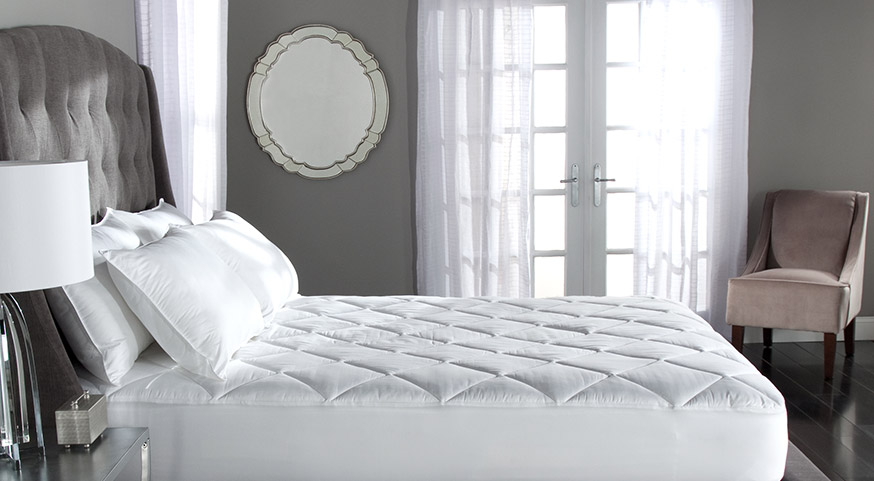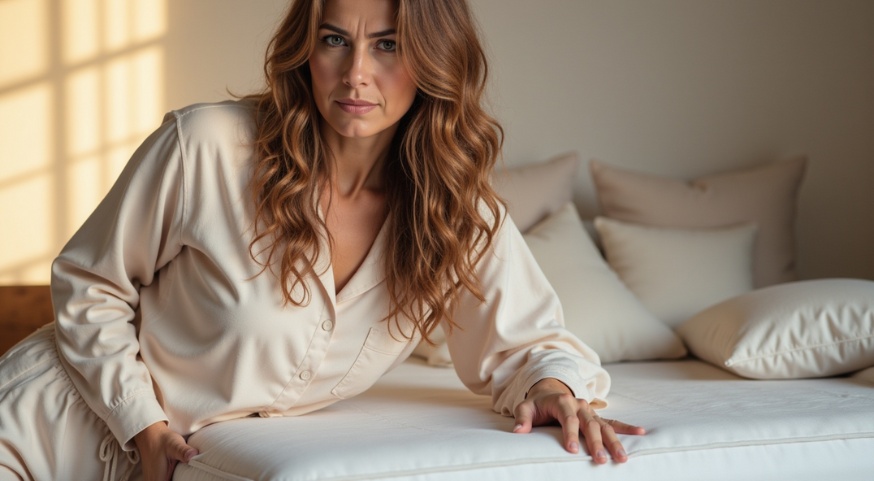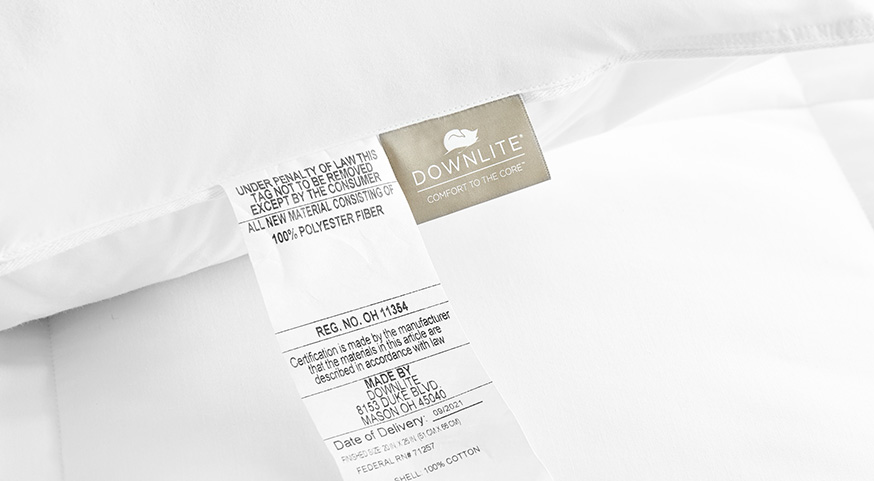Posted by Aline Martin O'Brien on Jun 21, 2022
Best Bedding for Side Sleepers
Sleep position is personal, but there are only so many positions the human body can assume in repose, so in which category do you fall? Beyond the big three - back, stomach and side - sleep positions have also been further sorted into fetal, log, yearner, free fall, starfish, and more.
The most common sleep position - the position you are in when you first fall asleep - is the side sleeper, with 54% of sleepers falling asleep in that position. We all move around during the night to keep our blood circulating and adjust to our microclimates, but the initial sleeping position is the one we usually return to for our most restorative sleep. If you wake in the morning with your hair smashed down on either or both sides of your head, you are a side sleeper.
Side sleeping can provide many benefits compared to back and stomach sleeping, including:
- Improved digestion
- Reduced sleep apnea and related snoring
- Relief from back and neck pain
- Lower blood pressure
- Improved sleep for pregnant women
- Improved brain health
Sleep positions are adopted at a young age and are not easily changed, but they are possible. Experts suggest using devices such as a tennis ball, backpack, or electronic stimulus to encourage side sleeping, but a change of bedding can also help with the habit change. Side sleepers require more cushioning than back sleepers and should therefore look for softer mattresses or thicker mattress toppers. Pillows can help hold you comfortably in place as you adapt to a good sleeping position.
If you do take the opportunity to match your bedding to your sleeping style more suitably, we can help you with everything from the mattress protector and mattress topper at the base to the luxurious and warming comforter topping your cozy new nest.
Having the proper pillow for the type of sleeper you are is an important consideration. Pillows come in various fills, densities, shapes, fabrics, and firmnesses. Technological advances provide cooling, anti-microbial, and hypoallergenic features, so there is a pillow available to satisfy every type of sleeper.
Side sleepers should look for firm support in a pillow that is thick enough to fill the area between the neck and the shoulder, 6”-8” for most people. If you are a side sleeper and find yourself stacking and folding pillows over to get comfortable support, you should consider a firmer, thicker pillow.
A significant percentage of side sleepers adopt the fetal position as their preferred sleeping position. Fetal position sleepers often add a body pillow and/or additional sleeping pillows to support their legs and take pressure off their hips during the night.
Check out our Pillow Buying Guide for more guidance on selecting the right pillow for you. If you would like personalized assistance or professional advice before ordering your bedding, you may contact our customer service representatives, and they will assist you in your decision-making.
More sources:
- https://www.downlitebedding.com/blog/can-i-have-more-than-one-pillow/
- https://www.downlitebedding.com/blog/why-does-my-pillow-feels-different-than-it-did-at-the-hotel/
- https://www.downlitebedding.com/blog/why-just-buy-one-pillow-for-now/
- https://www.downlitebedding.com/blog/do-you-remember-the-last-time-you-changed-your-pillows/
- https://www.downlitebedding.com/blog/bed-pillows-come-in-different-shapes/
- https://www.downlitebedding.com/blog/why-do-people-steal-hotel-pillows/
- https://www.downlitebedding.com/blog/extend-the-life-of-your-mattress/
- https://www.downlitebedding.com/blog/the-essential-bedding-item-you-never-see/
- https://www.nytimes.com/wirecutter/blog/your-ideal-sleep-position/
- https://www.downlitebedding.com/bedding-guide-buying-the-perfect-pillow/
- https://www.ncbi.nlm.nih.gov/pmc/articles/PMC5677378/
Photo by RODNAE Productions











